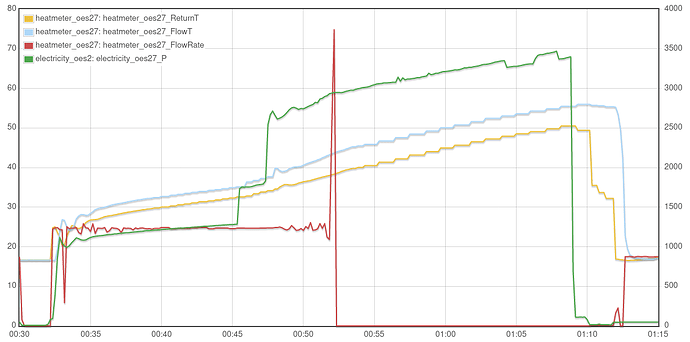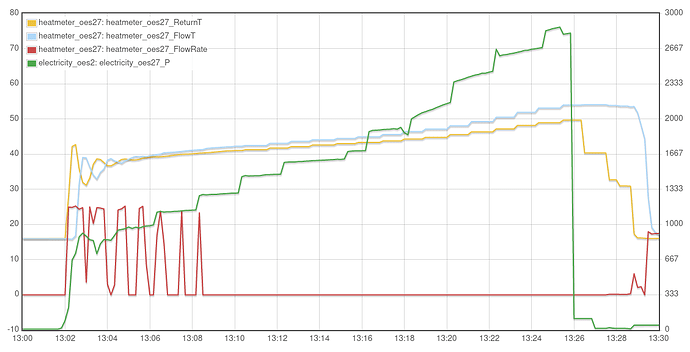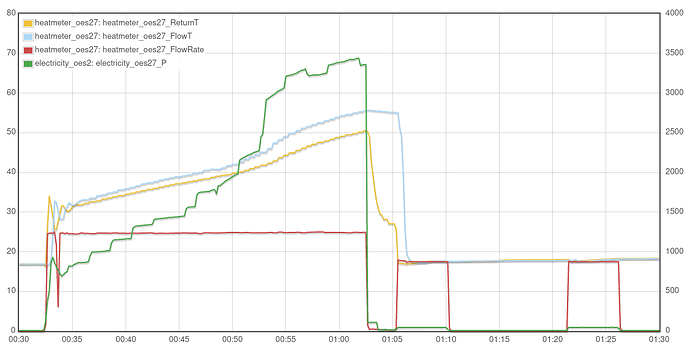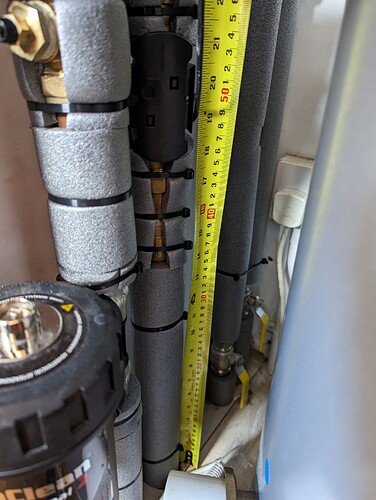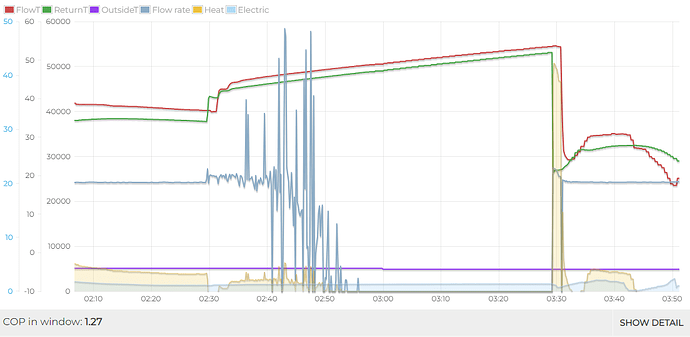I’ve recently switched to an ASHP from a boiler and, as part of the installation, OpenEnergyMonitor level 3 heat pump monitoring has been fitted.
I’ve consistently had problems with the monitoring equipment, but I’ve managed to work through most of them (details at the end of this post). The only remaining issue seems to be that the heat meter, a Kamstrup Multical 403, consistently stops functioning properly during a hot water cycle.
The only thing I can think of is that there is some kind of interference issue when the 3-port valve is energised, because there seem to be no issues at all during space heating cycles. I’ve tried tidying the cables more diligently, and temporarily moving the mains wiring for the valve further away from the heat metering equipment, but I’m struggling with this one.
Here’s an example of a hot water cycle where the meter seems initially fine, and then drops out. This is very repeatable, and the same thing is happening every day.
Notice that the flow sensor drops out completely; and the temperature readings become very jagged, which I’m interpreting as the meter not updating the readings internally for lengthened periods of time. The electrical power input to the ASHP indicates that it is still running during these dropouts.
The same thing is happening during the afternoon cycle; again, every day.
For reference, here’s everything seemingly working properly during a space heating cycle.
I’ll try to remember to get some photos of the physical layout of the equipment this evening.
Has anyone else had similar problems and managed to solve them?
Additional info - getting everything to this stage
Initially I had far more issues. The USB M-Bus adapter and the USB RS485 adapter for the electricity meter would drop out, resulting in errors being logged by Emonhub. As an experiment, I switched from a Pi4B to a Pi3A+ and an external USB hub, which dramatically improved the reliability. Then cable tidying fixed the remaining occasional drop-outs of the M-Bus adapter.
I plan to switch to an M-Bus adapter hat for the Pi (https://www.packom.net/product/m-bus-master-hat-ds/), when it arrives, to avoid USB woes.
